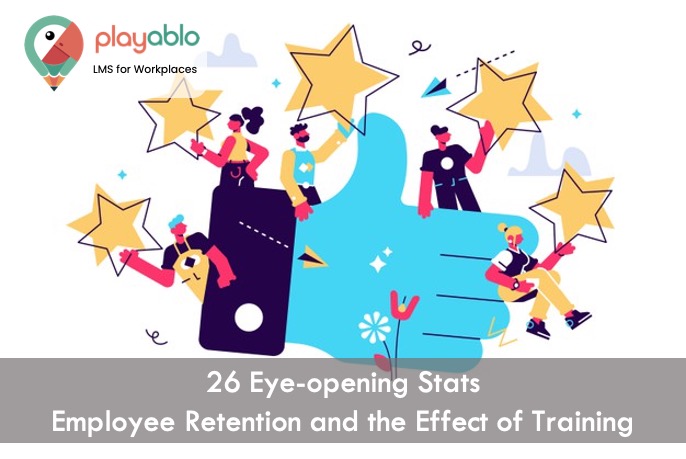What does employee retention entail? Most importantly, it needs one to take strategic actions that can keep employees motivated and focused so that they choose to stay with you long-term and fully productive. A full-fledged employee retention program plays a vital role in attracting and retaining your workforce. It also helps in reducing turnover and its related costs. All of these factors are responsible for an organization’s productivity and overall business performance. It is more efficient to retain a quality employee than to recruit, train, and orient a replacement employee of the same quality.
In fact, as per SHRM’s Employee Job Satisfaction and Engagement: The Doors of Opportunity are Open research report, employees identified these five factors as the leading contributors to job satisfaction:
- Respectful treatment of all employees at all levels.
- Compensation/pay.
- Trust between employees and senior management.
- Job security.
- Opportunities to use their skills and abilities at work.
And training plays a significant part in your employee retention efforts. Effective learning strategies motivate your workforce to stick with your company in the long run. Yes, the link between corporate online learning and staff retention is clear and supported by much research. Consider these informative employee retention statistics reported in recent research reports.
Employee Training Statistics: 26 Employee Retention Metrics

- According to Gallup, 51% of employees are considering a new job.
2. As per a report from the Center for American Progress, employee turnover can cost organizations anywhere from 16% to 213% of the lost employee’s salary.
3. A Future Workplace and Kronos study has found that 87% of employers said that improving training and retention is a critical priority for their organization.
4. An Allied Workforce Mobility Survey discovered that companies lose 25% of all new employees within the first year.
5. According to the Society for Human Resource Management (SHRM), 69% of employees are more likely to stay with a company for 3 years if they experienced great onboarding.
Read More: Before – During – After | Improving Knowledge Retention With eLearning Methodologies
6. MRINetwork has found that 72% of candidates are driven by career advancement opportunities, the number one reason people change jobs.
7. Employees who undergo an effective onboarding process can reduce new hire retention by 82%. (Source)
8. Companies that provide the option for remote work have 25% lower employee turnover. (Source)
9. 79% of employees wouldn’t accept a job at a company with a higher salary unless the company failed to take action against employees involved in unethical behavior. (Source)
10. 77% of companies focus on employee experience to increase retention. (Source)
11. Employees whose managers consistently acknowledge them for good work can reduce turnover up to 31%. (Source)
Read More: 15 Workplace eLearning Statistics for L&D Leaders in 2021
12. 35% of workers say they’ll quit if they don’t get a raise.(Source)
13. The average employee exit costs 16% to 213% of their annual salary depending on their pay. (Source)
14. Human resource leaders admit employee burnout is sabotaging workforce retention. It handles 50% turnover. (Source)
15. 8 in 10 employees would seek a new job after 1 bad day. (Source)
16. 70% of staff members would leave their current organizations for a job with one known for investing in employee development and learning. (Source)
Additional Statistics About Employee Training and Retention
The following statistics revealed by Lorman.com explain how an effective training program leads to a boost in employee retention rates.
17. Organizations with poor onboarding processes are twice as likely to experience employee turnover.
18. 34% of employees who left their previous jobs were motivated to do so by more career development opportunities.
19. 86% of millennials would be kept from leaving their current position if training and development were offered by their employer.
20. Over 70% of high-retention-risk employees will leave their company in order to advance their careers.
21. Retention rates rise 30-50% for companies with strong learning cultures.
Read More: How To Counter the Forgetting Curve Using Microlearning
Ad: PlayAblo’s Enterprise-Grade Micro-Learning platform is for the modern corporate learner. Moreover, micro-learning, along with assessments and gamification features, ensures learning outcome measurement along with sustained engagement.
Find out more and request a custom demo!
22. 16% of Gen Z and Millennial employees have quit their jobs because they felt the technology provided by their employer was inadequate. (source)
23. Highly engaged business units experience 59% less employee turnover. (source)
24. Companies rated highly on employee training saw 53% lower attrition. (source)
25. Companies rated highly on ‘purposeful mission’ saw 49% lower attrition. (source)
26. 90% of workers said they are more likely to stay at a company that takes and acts on feed. (source)
Conclusion
When you make your investment in the proper skilling building tools/platforms and technology a priority, it is easy to engage your workforce. It empowers your staff by giving them a voice to be heard. Additionally, it embeds in them a purpose that serves as a cornerstone of your company’s corporate learning culture. After all, the power lies in your hands to shape the outcome you desire regarding employee retention, loyalty, and engagement.
Ad: PlayAblo’s Enterprise-Grade Micro-Learning platform is for the modern corporate learner. Moreover, micro-learning, along with assessments and gamification features, ensures learning outcome measurement along with sustained engagement.
Find out more and request a custom demo!






